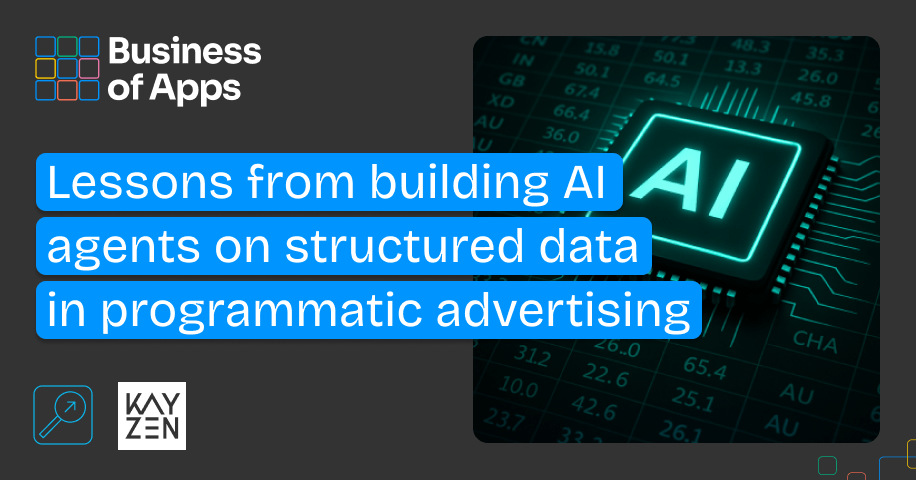In January 2019, we announced the official launch of Kayzen, the world’s first in-house bidder™ custom-built for mobile advertisers. Today, one year later, we are proud and grateful to announce the close of our Late-Seed funding round totaling more than 4M USD. This marks a major milestone in our journey to continue building a strong company, along with the best programmatic in-house product and technology. We are thankful for the trust and support of our investors Roberto Bonanzinga @InReach Ventures and Petteri Koponen @Lifeline Ventures as well as 15+ business angels including Timo Soininen, Ragnar Kruse and many more great entrepreneurs!
Let us share with you our perspective on mobile advertising as it stands today, what we have learned and where we are moving from here.
Performance, Transparency, Control: why can’t advertisers get it all?
In December 2015 I published an article titled “Where the demand side of the mobile marketplace needs to be in 5 years ”. Back in the days, mobile apps had just really gotten started to eat into the growth of desktop advertising and mobile programmatic was still in its infancy. Google was still open to provide advertisers control over their app campaigns by allowing separate campaign strategies for YouTube, search ads and GDN inventory. Facebook buying was largely CPM based at the time and a large number of vendors were flourishing as they were providing optimization tools and services on top of the walled gardens. Rewarded video, today an integral part of the mobile ads ecosystem, was the exception rather than the norm as advertisers all too often confused it with incentivized offer walls.
Fast forward to today and a lot has changed. While not all predictions have come true, two of the predictions have largely materialized. First, mobile rules the world more than ever before. The vast majority of consumer internet is on mobile devices. With this, the mobile advertising landscape has still remained largely separate from the legacy desktop world. While most desktop players are rushing into the addressable TV market in search of growth, mobile advertising now has a number of established and scaled companies in addition to the walled gardens. This strengthens our belief that building an in-house bidder customized for mobile use cases is the right strategic choice to best serve mobile advertisers.
Second, the market is moving to programmatic. While ad networks still own the lion’s share of the ‘independent’ mobile ads market – that is anything not controlled by the walled gardens – the programmatic transition continues more than ever before. An increasing share of inventory is traded using the open RTB protocols. Ad networks have expanded their tech stacks and are largely transitioning to fully-fledged exchanges and supply-side platforms that publishers use as a one-stop-monetization-shop. This leads to a demand <> supply divide which is healthier for the ecosystem in the long run. On one side of the market, platforms to solve better for publisher’s monetization needs by combining ad mediation and advanced in-app bidding across ad formats. On the other side, advertiser centered technologies such as the Kayzen in-house bidder™ built for the needs of ad buyers. With tools and algorithms for performance optimization while providing unparalleled transparency and control.
Facebook, Google, and other walled gardens have made it clear where they stand today: they don’t want an open and transparent mobile ad ecosystem, shaped by the forces of an open market with fair competition and accelerated innovation. Instead, they aim to increase their oligopoly power by decreasing the level of transparency and control both publishers and advertisers get from their products. They are heading towards a future where their gardens turn into fortresses, data is accumulated behind thick walls and leveraged for their own best interest. Utilizing this data, they will expand into more and more markets, launching products that compete with their very own customers. Facebook dating, Google Flights, and Google Stadia are just a few of many examples that give an idea of what’s still to come.
Where Kayzen is going
2019 was our first year after our official launch. We continued investing 80%+ of our time and resources to keep building the best product in the market. With the remaining time and resources, we focused on working with the most innovative app developers and agencies. This resulted in a wealth of learning for us and our clients and more than 25 paying customers that have subscribed to any of the three tiers in our SaaS offering. We are grateful for their business and continuous feedback to help us get a little bit better every day.
With this investment, we will continue our journey to give mobile performance advertisers back what they got deprived of over the past years: transparency and control over their mobile advertising budgets, powered by programmatic technology.
In addition to our investors and our customers, we’d especially like to thank our team! We can’t express how grateful we are to have you and to building this company together! You have been great and you will continue to be Kayzen’s strongest asset in our quest to change the mobile advertising world for better. Keep rocking!
– Tim, Servesh, Puneet



